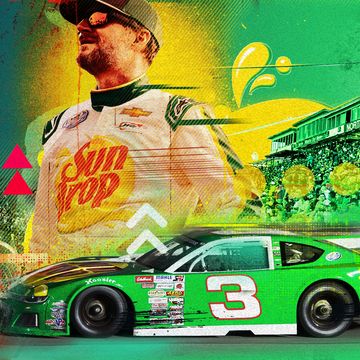It is impossible but undeniable. In the video for Fat Joe’s 1993 banger “The Shit Is Real,” the Bronx-born rapper, boasting of his successful transition from a life of crime to a life of stardom, emerges onto a New York City street in his ride of choice. It is not a Mercedes, a Cadillac, or a Lexus. It’s not even an Acura. It’s a first-generation Mazda MPV, a snouty three-doored loaf, with which the economy brand entered the American minivan market in 1988 for the 1989 model year.
This story originally appeared in Volume 15 of Road & Track.
Joe wasn’t alone in his affection for this odd-duck truck. The MPV appeared in the lyrics and videos for a raft of Nineties East Coast hip-hop legends, including Biz Markie, the Wu-Tang Clan, Prodigy, Busta Rhymes, Heavy D, and the Notorious B.I.G.
It wasn’t the MPV’s available V-6 and four-wheel drive or its exalted position on Car and Driver’s 1990 and 1991 10Best lists that appealed to these superstars. Like many fashions that rose from the streets—including Kangol caps and Timberland boots—the vehicular trend was based at least in part on it being so uncool that any modish gloss could be placed upon it. Its stealthy mom-core drag, ability to seat seven members of “a sick-ass clique,” and ample capacity for carrying many “keys from ’cross seas,” as praised by Wu-Tang’s Raekwon, surely also compelled these poets.
But according to the late Biz Markie, the roots of MPV affection emerged from a cult of personality. Though Gang Starr member DJ Premier claimed that his personalized MPV, with its highly regarded custom sound system, was the progenitor of rappers’ affinity for the vehicle, Markie—in a 2017 interview with Questlove—traces it to notorious Harlem crack dealer Rich Porter.
Porter, whose life was the inspiration for the 2002 movie Paid in Full, was an avid car collector and automotive omnivore. Of course, he bought Benzes and BMWs, but he had a Mazda RX-7 and a Nissan 300ZX too. Markie knew Porter from the neighborhood and saw him around. One time in the late Eighties, he ran into Porter, whom he described as “one of the flyest dudes known to man.” Porter was driving a weird-looking van.
“I said, ‘Yo man, what is that?’” Markie related. Porter told him it was a Mazda MPV. Flush with cash from his hit single, “Just a Friend,” Markie said he went car shopping the next day and bought two. He gave a blue one to his DJ, Cool V, and kept a black one for himself. He customized it with black chrome BBS rims and a $12,000 sound system that included a digital audio tape (DAT) player, a music-reproduction technology so faithful that the recording industry attempted to have it banned for fear of widespread piracy.
By the early Nineties, the Mazda van trend had become so viral it even united beefing East and West Coast rappers. When California superstar Tupac Shakur was in New York filming the 1994 basketball drama Above the Rim, he was spotted rolling through Harlem. He was in an MPV.
Brett Berk (he/him) is a former preschool teacher and early childhood center director who spent a decade as a youth and family researcher and now covers the topics of kids and the auto industry for publications including CNN, the New York Times, Popular Mechanics and more. He has published a parenting book, The Gay Uncle’s Guide to Parenting, and since 2008 has driven and reviewed thousands of cars for Car and Driver and Road & Track, where he is contributing editor. He has also written for Architectural Digest, Billboard, ELLE Decor, Esquire, GQ, Travel + Leisure and Vanity Fair.















